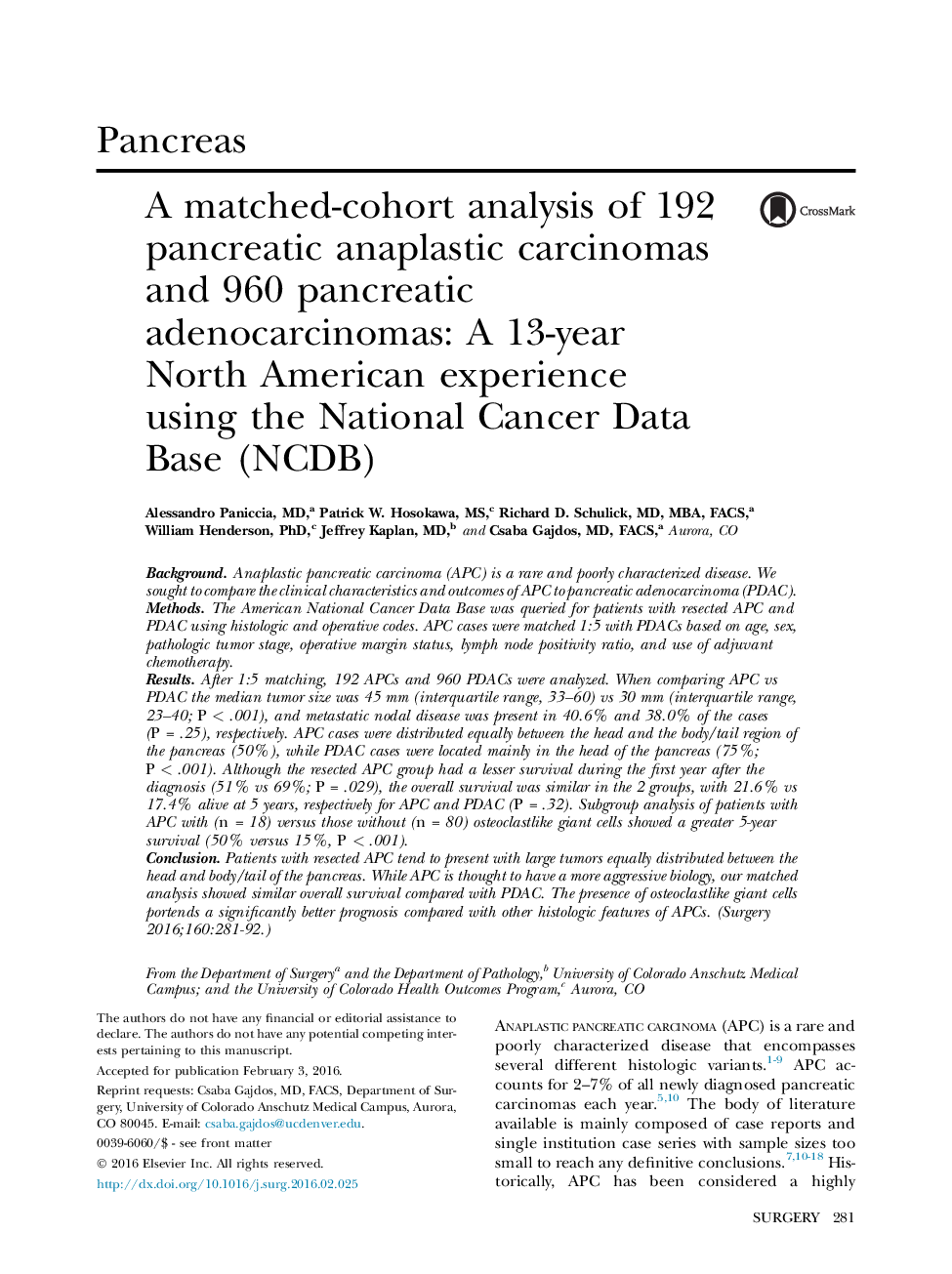| Article ID | Journal | Published Year | Pages | File Type |
|---|---|---|---|---|
| 6254947 | Surgery | 2016 | 12 Pages |
BackgroundAnaplastic pancreatic carcinoma (APC) is a rare and poorly characterized disease. We sought to compare the clinical characteristics and outcomes of APC to pancreatic adenocarcinoma (PDAC).MethodsThe American National Cancer Data Base was queried for patients with resected APC and PDAC using histologic and operative codes. APC cases were matched 1:5 with PDACs based on age, sex, pathologic tumor stage, operative margin status, lymph node positivity ratio, and use of adjuvant chemotherapy.ResultsAfter 1:5 matching, 192 APCs and 960 PDACs were analyzed. When comparing APC vs PDAC the median tumor size was 45 mm (interquartile range, 33-60) vs 30 mm (interquartile range, 23-40; P < .001), and metastatic nodal disease was present in 40.6% and 38.0% of the cases (P = .25), respectively. APC cases were distributed equally between the head and the body/tail region of the pancreas (50%), while PDAC cases were located mainly in the head of the pancreas (75%; P < .001). Although the resected APC group had a lesser survival during the first year after the diagnosis (51% vs 69%; P = .029), the overall survival was similar in the 2 groups, with 21.6% vs 17.4% alive at 5 years, respectively for APC and PDAC (P = .32). Subgroup analysis of patients with APC with (n = 18) versus those without (n = 80) osteoclastlike giant cells showed a greater 5-year survival (50% versus 15%, P < .001).ConclusionPatients with resected APC tend to present with large tumors equally distributed between the head and body/tail of the pancreas. While APC is thought to have a more aggressive biology, our matched analysis showed similar overall survival compared with PDAC. The presence of osteoclastlike giant cells portends a significantly better prognosis compared with other histologic features of APCs.
